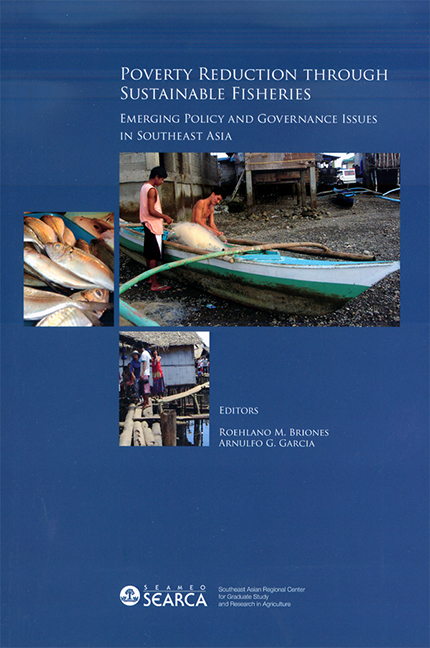 Poverty Reduction through Sustainable Fisheries
Poverty Reduction through Sustainable Fisheries Published online by Cambridge University Press: 21 October 2015
ABSTRACT
The coastal and marine resources in Southeast Asia are unequalled in density and diversity by those in other parts of the world. Fisheries from the region supply about 10 per cent of global fish catch. Over the last 20 to 30 years, these resources have been under threat of overexploitation, destruction, and extinction in some areas. This paper reviews the status of the most important coastal and marine resources in Southeast Asia; and highlights the primary threats to their sustainable use and existence. The dependency of coastal human populations on near-shore fisheries and resources is discussed in relation to the economic consequences of poor management of these resources. Finally, promising management strategies and governance systems from the Philippines are explored in terms of their implications on future research topics relevant to building sustainable fisheries. Research topics suggested include: 1) Continuous monitoring of the biophysical status of coastal resources so that policy makers are aware of the progress (or lack thereof) of protection and rehabilitation efforts; 2) Cost-benefit analysis of the management of coastal resources and fisheries; 3) Investigating the causes of resource degradation from pollution and other impacts on the coastal environment; 4) Understanding the tradeoffs between small and large scale fisheries in Southeast Asia; 5) Testing models for integrated coastal and ecosystem-based management including fisheries and economic development; 6) Testing ways to develop alternative economies for small-scale fishers that reinforce protection and management; 7) Augmenting and refining the integrated paradigms for management that put small-scale fisheries at the centre of a complex management problem; and, 8) Learning more about how to build capacity for management.
INTRODUCTION
The coastal and marine resources in Southeast Asia are unequalled in density and diversity by those in other parts of the world (Figure 10.1). It is well known that these tropical coastal areas are rich in coastal and marine ecosystems comprised of coral reefs, mangroves, estuaries, beaches, and their associated fisheries. Fisheries from the region supply about 10 per cent of global fish catch.
To save this book to your Kindle, first ensure [email protected] is added to your Approved Personal Document E-mail List under your Personal Document Settings on the Manage Your Content and Devices page of your Amazon account. Then enter the ‘name’ part of your Kindle email address below. Find out more about saving to your Kindle.
Note you can select to save to either the @free.kindle.com or @kindle.com variations. ‘@free.kindle.com’ emails are free but can only be saved to your device when it is connected to wi-fi. ‘@kindle.com’ emails can be delivered even when you are not connected to wi-fi, but note that service fees apply.
Find out more about the Kindle Personal Document Service.
To save content items to your account, please confirm that you agree to abide by our usage policies. If this is the first time you use this feature, you will be asked to authorise Cambridge Core to connect with your account. Find out more about saving content to Dropbox.
To save content items to your account, please confirm that you agree to abide by our usage policies. If this is the first time you use this feature, you will be asked to authorise Cambridge Core to connect with your account. Find out more about saving content to Google Drive.